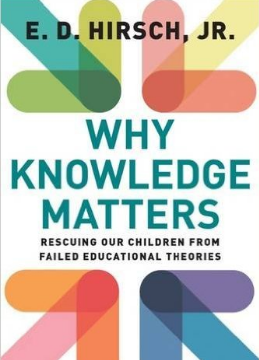Last month, on the heels of the Supreme Court’s decision in Fisher v. University of Texas, the hashtag #BeckyWithTheBadGrades began trending on Twitter. If you’re not sure what that phrase means or why it was so hotly discussed on social media, don’t despair. You’re not poorly educated, misinformed, or illiterate. But you’re probably missing a bit of cultural knowledge common among young people, particularly young people of color. The clever hashtag offers a lesson in the value of cultural literacy—often a touchy subject in education—but with a nifty twist: This time, it’s our students who got a cultural reference that left many adults scratching their heads.
 #BeckyWithTheBadGrades, for the uninitiated, is a reference to a song from Beyoncé’s new album Lemonade. Her song “Sorry” ends with the singer telling a faithless lover, “Better call Becky with the good hair.” Explains Emma Pettit of the Chronicle of Higher Education: “‘Becky’ is a term for a stereotypical white woman, and the mention of her “good hair” alludes to society’s elevation of whiteness….Thus ‘Becky with the good hair’ became a succinct phrase on the Internet to call out white privilege.” Fisher, who argued that the university denied her admission in favor of less qualified black and Hispanic students, was dubbed “Becky with the bad grades.” It stuck and went viral.
#BeckyWithTheBadGrades, for the uninitiated, is a reference to a song from Beyoncé’s new album Lemonade. Her song “Sorry” ends with the singer telling a faithless lover, “Better call Becky with the good hair.” Explains Emma Pettit of the Chronicle of Higher Education: “‘Becky’ is a term for a stereotypical white woman, and the mention of her “good hair” alludes to society’s elevation of whiteness….Thus ‘Becky with the good hair’ became a succinct phrase on the Internet to call out white privilege.” Fisher, who argued that the university denied her admission in favor of less qualified black and Hispanic students, was dubbed “Becky with the bad grades.” It stuck and went viral.
An educator friend remarked that he found the hashtag offensive “once hipper people explained the reference to me.” Think about that for a second. A gap in a well-educated and deeply informed adult’s cultural knowledge prevented him, however briefly, from comprehending and engaging with young African Americans about a landmark Supreme Court decision in a public forum. Usually it’s students lacking in cultural knowledge who have trouble with engagement and understanding; they sometimes struggle to clear hurdles because they don’t get some of the countless allusions many of us take for granted.
We don’t always appreciate this as we read, write, speak, or listen, but everyday language is thick with references to literature, art, music, mythology, and theology. From Achilles’s heel and Pandora’s box to Don Juan, Uncle Tom, and “raising Cain,” literate Americans know these references and use them without explanation, assuming that others get the references. And most of us do. Indeed, we cannot be said to be fully literate without knowledge of an array of common cultural references that add color and shades of meaning to speech and writing. What makes this a sensitive subject in education is that our most widely used allusions reflect the culture and history of the dominant “speech community.” In the case of the U.S., that means—for now, at least—a strong Eurocentric tilt.
This is not a plot to maintain privilege, but the nature of how language is used and evolves—an organic process that we are largely powerless to shape or direct. Your grandparents might have used the phrase “twenty-three skidoo” or the word “skedaddle” when it was time to leave a party. Your children are more likely to “bounce” or “peace out.” You might dismiss your kids’ terms as non-standard English, but slang plus widespread use over time equals idiomatic language. No one used “friend” as a verb before Facebook. Now the phrase “she friended me” has insinuated itself into the language. The word “phat” has appeared in the New York Timescrossword puzzle.
No authority has the power to decide which words, references, and allusions persist or insinuate themselves into the language (a dictionary isn’t a rule book; it’s a history book). English is a vernacular machine, minting and borrowing useful words and phrases on an as-needed basis from “bodega” and “telenovela” to “down with that” or “sending a text.” Activists might insist on “sex-neutral” pronouns like “xe”, “xem” and “xyr”; historians might prefer to render dates as “C.E.” and “B.C.E.” instead of “A.D.” and “B.C.” But these terms will remain obscure unless they gain traction in everyday use.
The same is true of cultural references. Will “Becky with the good hair” stand the test of time? It might be inscrutable generations from now. But I’d wager “put a ring on it” will still be around. In short, language is a cultural artifact. If we don’t account for it as teachers—ensuring that our children’s education is broad and rich enough to expose them to the language, history, and art that enliven our language—we risk imposing a kind of illiteracy on our students. This implies the need to make thoughtful judgments about what students read and learn rather than leaving it entirely to chance. If that makes us uncomfortable as teachers—well, don’t hate the player, hate the game.
As the “Becky” example shows, youth are the drivers of pop culture; they get plenty of exposure to those references. What they don’t know are the references that college professors, employers, elected officials, and others use. We might think of schooling as teaching the prior generation’s knowledge so that youth are prepared to communicate on an equal footing with those they are about to join in the economic and civic spheres.
Now if you’ll excuse me, I’m going to brush up on my Beyoncé.
– Robert Pondiscio
This post originally appeared in a slightly different form in U.S. News & World Report and then appeared on Flypaper.




